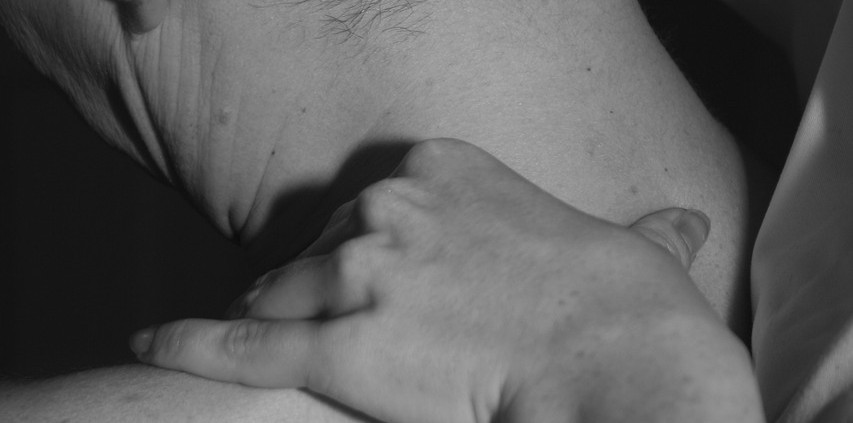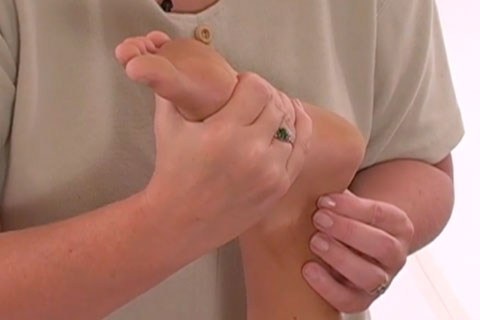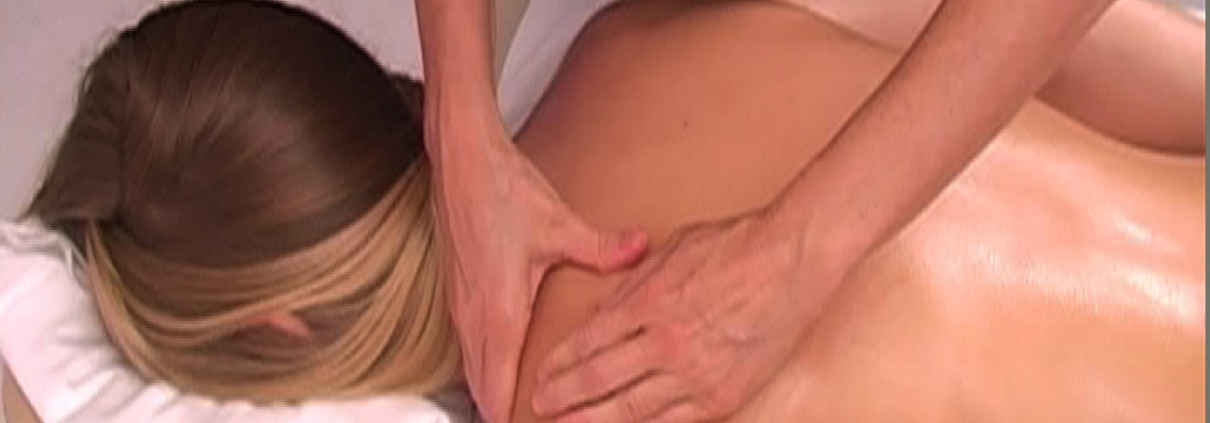Real Bodywork Massage Blog
Slow-Stroke Back Massage to Treat Leukemia
Leukemia, sometimes referred to as blood cancer, affects the blood forming tissues in the body. This can make an individual prone to excessive bleeding and infection. Leukemia itself and its treatment can cause a cluster of symptoms, most commonly pain, fatigue, and sleep disorders. These symptoms are related in that: pain can interfere with sleep quality, lack of sleep can increase fatigue, and fatigue can increase sensitivity to pain. In addition, cancer-related fatigue is more severe than standard fatigue, and cannot be alleviated by more sleep.
These symptoms can have a drastic effect on a patient’s quality of life. He or she may have difficulties socializing, may suffer from mood disorders, may be unable to carry out common, daily tasks, and more. Unfortunately, many treatments do not effectively treat this symptom cluster and many leukemia patients suffer daily.
The rates of leukemia are increasing worldwide. Therefore, researchers Miladinia, Baraz, Shariati, and Malehi (2017) conducted research about massage’s efficacy of treating this symptom cluster. Currently, only one research study addressed the use of massage as an additional form of treatment in leukemia patients (Taylor, Snyder, & Bourguignon, 2009). Massage, and many other forms of alternative treatment, can pose risks to leukemia patients that might not exist for other cancer patients – the heightened risk of infection and bleeding means treatments like acupuncture and deep massage are incredibly dangerous and must be avoided.
The researchers recruited 60 adults with leukemia for their study. 30 of these participants were randomly assigned to a massage group, and the other 30 participants were randomly assigned to a control group. The massage group would receive a slow-stroke back massage (SSBM) immediately after undergoing chemotherapy for a total time of 10 minutes. These 10-minute massages would happen three times a week over the course of four weeks. The control group received routine care after chemotherapy. The SSBM was as follows:
- Vaseline was applied to the skin with the participant in a seated position.
- Small circular strokes with thumbs on the neck (20 strokes in 30 seconds)
- Surface strokes from the base of the skull to the sacral region using the palm of one hand and repeating the action on the other side of the spine using the palm of the other hand, while the first hand would move toward the base of the skull (60 strokes in 120 seconds)
- Hand strokes along the shoulder blades using the thumb (20 strokes in 30 seconds)
- Hand strokes using the thumb on either side of the spine from shoulder to waist (10 strokes in 30 seconds)
- Sweeping strokes from the neck to the sacrum area using the palms of both hands (40 strokes in 90 seconds)
- This routine was repeated, then the massage concluded.
The researchers measured the intensity of the symptom cluster (pain, fatigue, and sleep disorder), as well as quality of sleep.
At the conclusion of the study, the researchers discovered that SSBM significantly decreased the intensity of the symptom cluster and significantly increased the quality of sleep. This discovery seems to align with results from the only other study of massage and leukemia, in that massage provides significant relief for leukemia patients. The other study found significant relief after a 7-week intervention, whereas this study found significant results after a 4-week intervention. While both studies did discover that massage is a suitable, complementary therapy, it should be noted that the effects are short-term. Miladinia, Baraz, Shariati, and Malehi found that the effects of the massage had faded a week after the study had ended, with participants reporting that their symptoms began worsening.
Regardless of its short-term effects, SSBM seems to provide a safe, noninvasive, and nondrug treatment that can improve the quality of life and level of comfort for patients with leukemia.
References:
Miladinia, M., Baraz, S., Shariati, A., & Malehi, A. S. (2017). Effects of Slow-Stroke Back Massage on Symptom Cluster in Adult Patients With Acute Leukemia. Cancer Nursing, 40(1), 31-38. doi:10.1097/ncc.0000000000000353
Taylor, A. G., Snyder, A. E., & Bourguignon, C. M. (2009). 123. Effects of massage on AML treatment-related symptoms and health-related QoL. Brain, Behavior, and Immunity, 23. doi:10.1016/j.bbi.2009.06.128
Plantar Foot Massage to Treat Type 2 Diabetes Mobility and Balance Symptoms
An unfortunate reality for many people affected by type 2 diabetes is foot and leg circulatory problems. Decreased circulation means weakened sensitivity and poor healing. While symptoms vary widely between each individual, some of those affected have severe diabetic neuropathy that impacts mobility and balance. This can culminate into constant tripping/falling and decreased quality of life.
Researchers Yümin, Şimşek, Sertel, Ankarali, and Yumin (2017) investigated the effects of foot plantar massage as treatment for these balance, mobility, and reach issues.
The study consisted of 38 adults who were diagnosed with type 2 diabetes. The participants would partake in three assessments, receive a ten-minute massage, then retake assessments. The assessments went in this order:
Timed-Up and Go Test: This test is used to measure mobility. In this test, a participant is timed as he or she starts from a seated position, walks 3 meters, and returns to the seated position. The higher the score, the better the mobility and the lower the score, the poorer the mobility.
One-Leg Standing Test: This test is used to measure a person’s balance. The participant is timed while standing on one foot with no assistance. The longer a person is able to stand on one foot means the better his or her balance. For this study, the researchers had the participants run the test on each leg three times, then the mean value was recorded.
Functional Reach Test: This test is used to measure reach. The participant would stretch an arm as far as possible with measurements taken from base recordings. The reach value is then deducted from the base value.
For the massage, the researchers used a combination of Swedish and deep-friction massage, including kneading and stroking. The participants were in supine positions as the massage was applied to the left and right foot dorsum; medial, lateral regions of the foot; the toes; and the plantar region.
Researchers discovered that after receiving a ten-minute foot plantar massage, participants’ balance, reach, and mobility were significantly increased. Researchers argue that this is most likely because the soles of the feet are thought to be important to attain postural control and balance.
There are limitations to this study, however. The study only used one group for a single treatment – it is unknown if the effects last over time. The use of a control group would also provide better accuracy with the results of this study.
Regardless, significant gains were made with participants with type 2 diabetes in terms of balance, mobility, and reach. It appears that foot massage may provide a positive treatment that can be incorporated into rehabilitation programs.
References
Yümin, E. T., Şimşek, T. T., Sertel, M., Ankaralı, H., & Yumin, M. (2017). The effect of foot plantar massage on balance and functional reach in patients with type II diabetes. Physiotherapy Theory and Practice, 33(2), 115-123. doi:10.1080/09593985.2016.1271849
The Overactive Trapezius and Massage: a Study
Sore shoulders and neck are no uncommon enemy – many individuals suffer from pains and aches in their upper body with localization in the neck and shoulders, or the mid and upper trapezius. The trapezius muscle, a muscle that extends from the lower thoracic vertebrae to the occipital bone and scapula, is prone to increased activity which translates to tension. When this muscle is subject to prolonged postural contractions, it can overload, making it susceptible to injuries including muscle trauma/pain and fatigue.
It comes as no wonder that many people complain of neck and shoulder pain; working conditions commonly include being seated in front of a desk with the neck strained forwards. Even at home, many find it comforting to stay seated for extended periods of time rather than standing or walking about. The pains can vary from mild to severe, even debilitating for some. New research looked at massage to alleviate the muscle activity and tension.
The study
Domingo et al. (2017) gathered 17 young adults for their study. The study lasted for 24 hours with two 30-minute interventions – in one intervention, participants received a massage and the other consisted of quiet sitting. The researchers started the intervention by taking surface electromyography measurements (EMG), followed by massage or quiet sitting. After 5 minutes had passed, measurements were taken again and this procedure followed along until the 30 minutes were up.
The massage consisted of interlaced effleurage, petrissage, and friction at moderate pressure. The massage was performed on the upper shoulders and neck bilaterally, with the researchers spending equal time on each side.
The results
The researchers found there was a small decrease in the trapezius muscle activity during the quiet sitting intervention; however, this decrease was very small (1.0%) and proved insignificant. Trapezius muscle activity significantly decreased by 19.3% when a massage was given. These results showed even after only five minutes of massage had been provided.
These results implicate massage as a useful and simple tool to help ease the aches in the neck and shoulders, as well as minimize the chance of muscle trauma occurring by calming the muscle activity. For those who work daily in an office seated at a desk, asking a partner or roommate for a five-minute massage may help improve the effects of prolonged sitting.
While this research certainly sheds light on short massage combatting the pains of daily life, the researchers argue further studies are needed to investigate whether these results can provide long-term benefits towards bodily function and improved quality of life. Another area of study could delve into the benefits of calming an overactive trapezius muscle with a weekly or monthly massage. For those who are unable to receive a quick massage after a day of work, would a weekly or monthly massage suffice to alleviate the aches in the shoulders and neck until the next week or month?
Massage is well-known among the general population as a source of relief from muscle fatigue and trauma; this new research shows that by massaging a muscle that is prone to being overactive, massage can not only relieve pain but also prevent further injury, something of increasing importance in working life.
References
Domingo, A. R., Diek, M., Goble, K. M., Maluf, K. S., Goble, D. J., & Baweja, H. S. (2017). Short-duration therapeutic massage reduces postural upper trapezius muscle activity. NeuroReport, 28(2), 108-110. doi:10.1097/wnr.0000000000000718




Follow Us!